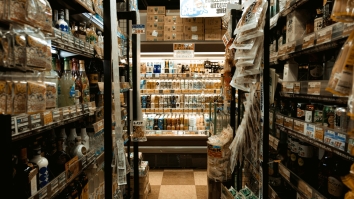The power of digitising supply chains in the region
The Asian retail market is beginning to see light again with the gradual reopening of the supply chain trade. Along with the recent commitment by APEC member economies to strengthen supply chains and promote the digital economy to fast-track recovery from the economic crisis, businesses need to adopt technology to reduce uncertainties and protect their employees and customers in the process.
We are also entering a new era of supply chain management where digitisation is no longer a luxury but a necessity. Businesses across the region are looking to pursue the digitisation of their supply chains effectively whilst remaining cost-efficient.
Focussing particularly on the area of logistics and distribution, this piece will look at how the digitising of supply chains can aid overall economic recovery in the region, and how companies can benefit from e-solutions to manage supply chains better going forward.
Digitising logistics with AI technology
We’ve seen how Industry 4.0 has impacted the area of logistics. Machine learning (ML) and automation has shifted the demand for specific skills sets, bringing unprecedented change to the logistics sector. As the pandemic continues to loom over our heads and put a strain on businesses, more procurement specialists and engineers are turning to artificial intelligence (AI) and automation to improve their supply chain processes.
From data tracking, detection of anomalies, to making predictions, AI and ML has transformed the logistics industry in many ways. Interactive chatbots have become commonplace, replacing roles traditionally held by humans. These capabilities lower operational costs and help streamline supply chain processes with a more uniformed approach. The capabilities of AI to make data-backed predictions for the future also improves efficiency for the logistics business.
On the retail front, mobile technology has taken centre stage particularly amidst the Covid-19 pandemic due to hygiene factors. A survey by SOTI reveals that shoppers prefer to shop independently, with 66 percent of consumers choosing self-service technology over a salesperson. As shoppers go digital, retailers can track and trace every product on the shelf, making sure that they remain stocked 24/7. Doing so eliminates the problem of over or under supply which can be particularly helpful for smaller businesses and SMEs, who are often most affected by resource wastages.
But in order to expand and shrink according to market demands, businesses will require a more flexible, or elastic logistics pipeline. This can be done with the help of AI to schedule, maximise container utilisation, and ensure route optimisation.
Web-based procurement and purchasing solutions can also be integrated into company systems, allowing businesses to reap the benefits such as complete visibility and control over supply chain management, in turn allowing faster time to market for their products and reducing costs.
Creating an ecosystem for distribution
As the logistics sector relies on AI technology to streamline its operations, distribution lines will also need to be equipped with real-time inventory management tools. This is where blockchain technology can help, along with the adoption of the Internet of Things (IoT). The transparency of blockchain technology provides an end-to-end visibility of the supply chain. It also allows different components of a supply chain to be integrated into a single platform, from freight forwarders to billing. Having everything on one platform reduces any hiccups along the way and allows distributors to quickly identify issues when they happen.
The adoption of IoT can also help businesses optimise their assets. With sensors that provide live tracking updates on shipping and delivery, companies will have better control of inventory, leading to more efficient distribution solutions backed by data.
The idea of adopting blockchain and IoT can sound like a lofty one, but smaller organisations should not discount themselves from the picture. Regardless of size, the digitisation of distribution channels is relevant to all businesses. For example, a weak distribution strategy, even for a fantastic product, will delay time to market and this can be catastrophic especially if an SME is trying to compete with bigger firms targeting the same audience. If smaller organisations leave it only to the big players, they will quickly be left behind.
Digitising supply chains is likely the solution to aid overall economic recovery in the region, but it will need to be a collective effort. It requires buy-in from big and small players, so that they can all fit into one ecosystem, streamlining processes. It is only a matter of time before digitising the supply chain becomes a requirement; after all, consumers are already headed in that direction.























 Advertise
Advertise








